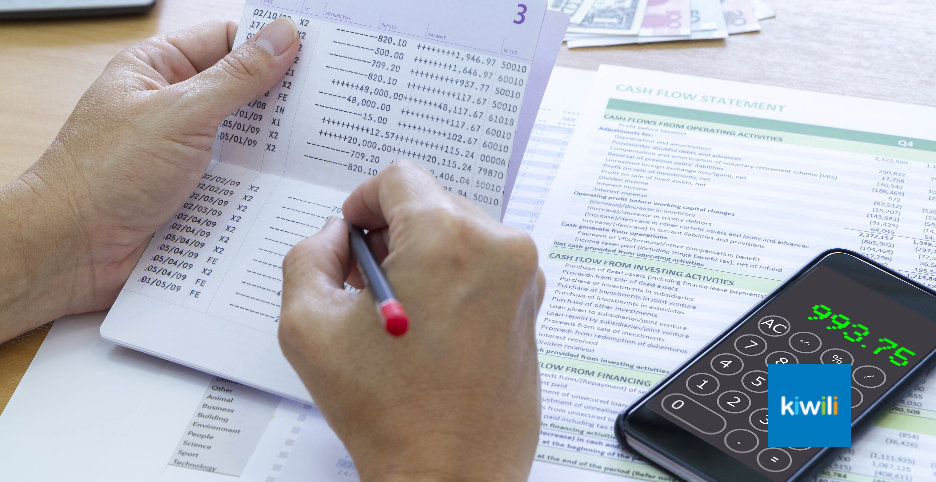The general ledger has been at the core of accounting for centuries, being essential for financial management and success in companies large and small alike. But what exactly is a general ledger and what is it used for? In this article we explain how to complete a general ledger and how best to use it. Keep reading to learn more about the general ledger and how you can use it in your small business.
Definition of a General Ledger
The general ledger (sometimes abbreviated to GL, and also known as an accounts book) is a master accounting document which allows you to see the financial position of a company as a whole. Specifically, it is used for recording all of the financial transactions. These financial transactions (or accounts entries) are detailed and grouped in the general ledger by their account class or sub-ledger account, according to the company’s chart of accounts. A chart of accounts lists all of the accounts recorded in the general ledger, which can range from just a few account categories in a small business, to thousands of categories in a large company. Accounts can include assets, liabilities, revenues, expenses, gains and losses.
Think of general ledger as a bird’s eye view of your business, while a journal is more like the reference section in an academic paper, you can see exactly when and where the information came from, with plenty of detail. Journals should be updated daily. You should be especially motivated to stay on top of your paperwork if you’re a sole-proprietor or a sole-trader, or you’ll be kicking yourself 6 months down the line when you’re dealing with a jumbled backlog of transactions to record…
The general ledger uses the double-entry accounting system : each transaction is logged under two accounts at once. In this accounting method, an accounting entry is made in the credit of one account and the debit of another at the same time, for the same amount. The accounts on the general ledger correspond to the accounts on the income statement and balance sheet, which is where this information will ultimately end up. Find out more in our post on income statements.
The “income” in income statement can include figures from the general ledger accounts for cash, inventory and accounts receivable. The expenses listed on the income statement can come from the general ledger accounts for expenses such as interest charges and advertising.
Before transferring and classifying transactions in the general ledger, first they must be recorded in the accounts books. Different companies use different accounting books (purchase ledger/purchase journal/accounts payable, sales journal/sales ledger/accounts receivable, cash receipts journal, cash payments journal/cash book etc.) depending on the type of company. It is however mandatory to have a general ledger in order to consolidate all of the books. Doing an inventory and categorising all of the transactions in the accounts books, so that’s the money coming in (cash inflow) and going out (cash outflow), is called bookkeeping. You can find out more in our post Bookkeeping and Accounting for Small Businesses and the Self-Employed,
General Ledger : Content and Format
A general ledger contains the entirety of a company’s financial transactions, classified by account and in chronological order.
The following must be included :
- Date
- Description
- Amount of each transaction, having affected both the debit and credit accounts
- The final balance of the account
In order to make sure the information recorded is correct, for each account category the sum of debits must be equal to the sum of credits.
There aren’t any legal requirements about the format of a general ledger, but it is often seen in the form of a table. Each of the accounts are listed on the left, and then there is a debit column and a credit column on the right.
Why Your Business Needs A General Ledger
Not just a simple piece of paper filled with numbers, the general ledger :
- Provides a single document consolidating all of the financial transactions in any given period
- Is essential for analyzing the financial health of a business and paints a realistic picture of your financial position
- Allows you to view the details of all financial transactions
- Is useful for picking up on mistakes keyed in at the time of recording the transactions
- Helps to identify and prevent fraud
- Helps with establishing the trial balance, so your books balance and you can validate your debit and credit accounts records
- Helps compile financial statements, including balance sheets, income statements, cash flow statements, and many other reports essential for evaluating profitability, liquidity and overall financial health. These reports are used by company stakeholders such as accountants, management, analysts and investors
- Makes it easier to file tax returns as your expenses and income are in one place
Years ago, accountants would of course have recorded financial transactions on paper and by hand. Luckily for you, that’s no longer the case, and that pain-staking process has been left in the past where it belongs. These days, most people opt for either spreadsheets or specific accounting software. Now, as software can be an investment for the self-employed and small businesses, we recommend you do some research before making your choice. A good place to start is making sure that the software you choose is compatible with companies of your size and in your industry. If you have a high volume of transactions, or need multiple user accounts, is there a cap on usage? Is the software customisable? Meaning you can adapt it’s functionality to suit your needs exactly? A good place to start is with Kiwili, an all-in-one business management and accounting software trusted the world over, designed specifically with the self-employed and small businesses in mind. While our methods change, the general ledger remains a quintessential part of doing business, and will probably be around for a very long time!
Due to the legal requirements of storing your company’s financial records for extended periods of time in case of financial checks, this would amount to huge volumes of paperwork, and consequently, the need for a physical place to keep it all, not to mention backing it up. With our cloud-based accounting software, not only is your activity all in one place, but you can access it anywhere.
Now you know that the general ledger forms the basis for good accounting, perhaps you’re wondering about the easiest way to produce this report? All you need to do is use an accounting software like Kiwili. An accounting management software can automatically generate and update a general ledger, the general journal, and also generate financial statements. A computerized tool can prove itself to be invaluable when it comes to doing your accounting, particularly for avoiding calculation mistakes and errors in data transcription. Accounting software can also save you precious time in simplifying all of your accounting tasks. Explore Kiwili today with our 14 day free trial to access general ledger templates and more.
Kiwili is an all-in-one business management software. It is at the same time an easy invoicing software, an accounting software, a CRM, a convenient project management tool and a time tracking software. Everything you need to manage your business like a pro!

